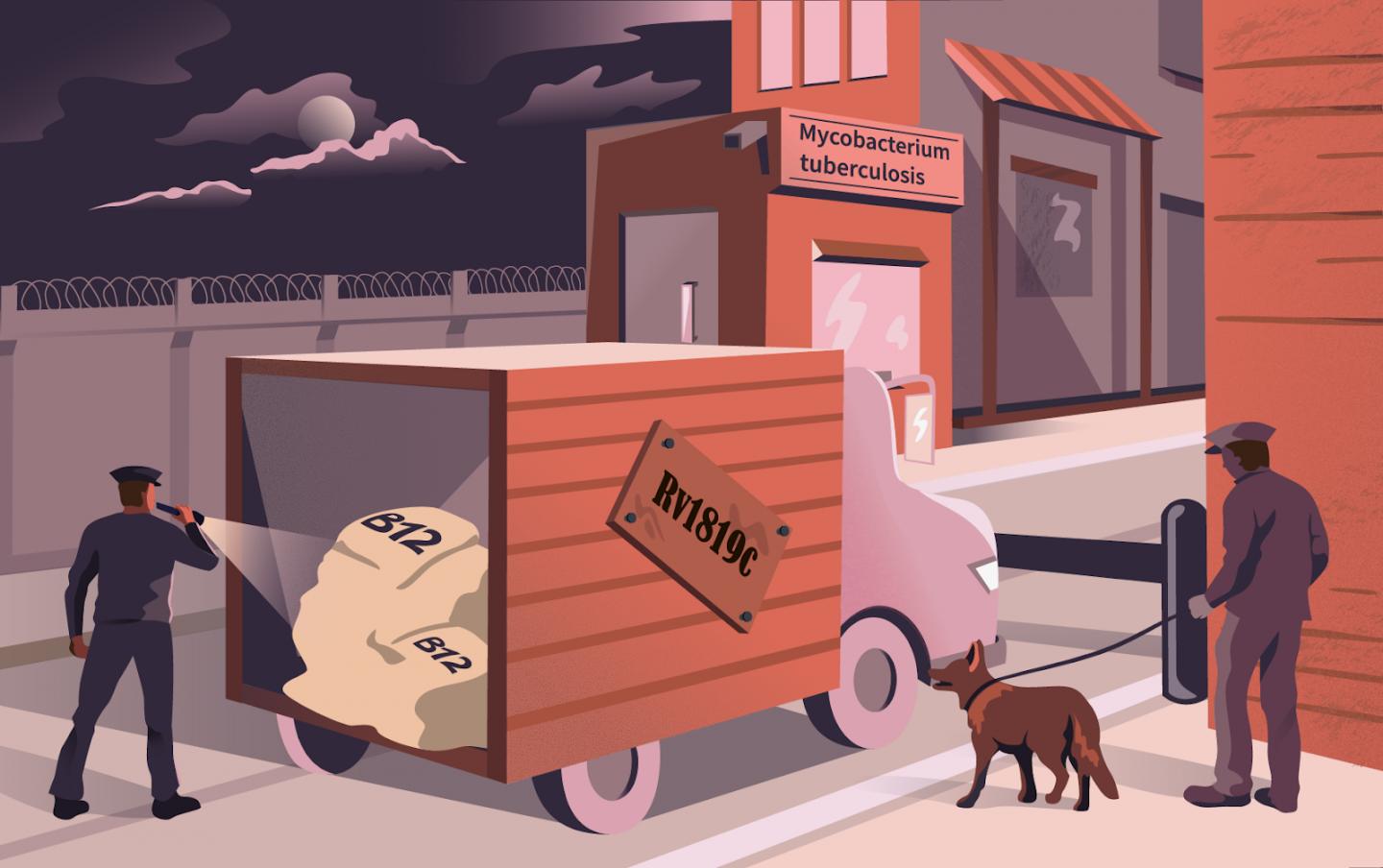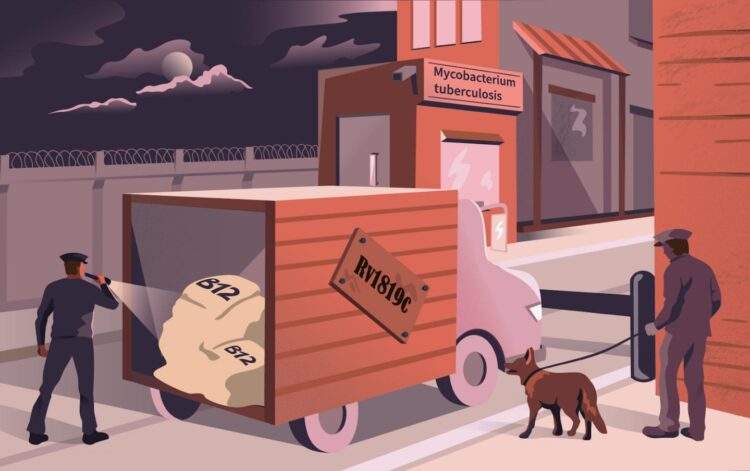
Credit: Daria Sokol/MIPT Press Office
Researchers from Russia, the Netherlands, Sweden, and the U.S. have revealed the structure of the protein responsible for vitamin B12 import into the cells of the bacterium that causes tuberculosis. The research findings were published in Nature.
Vitamin B12, also known as cobalamin, is vital to the proliferation of Mycobacterium tuberculosis, which causes TB. But while that vitamin can be synthesized internally, it is much easier for the pathogen to import B12 from the environment, and cobalamin consumption by the bacterium is directly associated with TB progression.
However, no known B12 importer has been discovered in the pathogen’s genome, only three cobalamin-associated proteins. While one of them — Rv1819c — was regarded as a candidate for B12 transport, the amino acid sequence analysis suggested that it likely functions in a different way: as an exporter.
The authors of the recent paper in Nature addressed this contradiction: They found that the protein is indeed capable of importing B12 and used single-particle cryo-electron microscopy to explain how it works.
The experiment involved a cell line of Escherichia coli, manipulated so as to lack any B12 transporters. Placed in a cobalamin-rich culture medium, the bacteria did not grow until the researchers endowed them with the Rv1819c protein from Mycobacterium tuberculosis, which made them proliferate. The team also used a mutated cell line to establish that the Rv1819c-mediated transport depends on ATP hydrolysis.
The team resolved the 3D structure of the protein. It consists of two unevenly sized interconnected chambers, with the larger one located in the cell membrane and the smaller one protruding on the inside. The region between the two chambers is narrow, constricted by a loop of 17 amino acids.
The large cavity has a volume of about 7.7 cubic nanometers, which is enough to accommodate six or seven vitamin B12 molecules. A cap seals off the chamber on the outside, perhaps opening spontaneously to capture molecules from the external environment. Since the cavity is inlaid with negatively charged and polar amino acids, it is attractive for hydrophilic molecules.
This explains why the Rv1819c transporter, despite not being very selective, was found to favor polar and positively charged substrates. For example, the scientists showed that besides B12, the protein can transport a cancer medication called bleomycin. At the same time, it did not work with biotin, probably due to the latter molecule bearing negatively charged groups.
The part of the protein inside the cell is sealed with a bivalved gate, which communicates with the sites where the cell generates energy by breaking down ATP molecules. Two of them have to be consumed to open the gate, which explains why Rv1819c-mediated transport is ATP-dependent.
Study co-author Albert Guskov, who heads the Laboratory of Structural Electron Microscopy of Biological Systems at the Moscow Institute of Physics and Technology, commented on the findings: “Our study takes us one step further in understanding how tuberculosis develops. We now know how the pathogen acquires vitamin B12, which is vital for it. Importantly, the mechanism we humans use to import cobalamin is very different, making Rv1819c an excellent target for developing anti-TB drugs.”
“The discovery of this unexpected function of the protein that has been regarded as an exporter rather than an importer offers insights into the possible mechanisms of antibiotic delivery into pathogen cells,” the researcher went on. “Aminoglycosides, for example, are positively charged, so they cannot freely penetrate the membrane. Previously, we only knew these drugs somehow got into the cell. We can now say that Rv1819c and similar proteins might well be the transporters involved.”
The study featured researchers from the University of Groningen in the Netherlands, SLAC National Accelerator Laboratory and Stanford University in the U.S., and Stockholm University in Sweden.
###
Media Contact
Varvara Bogomolova
[email protected]
Original Source
https:/
Related Journal Article
http://dx.





